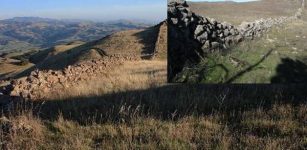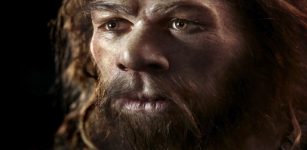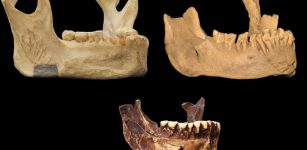Unique Statue Of Warrior Wearing A Phrygian Cap Accidently Discovered By Dutch Fishermen
Jan Bartek – MessageToEagle.com – Dutch fishermen onboard the shrimp cutter Wieringer 22 were astonished, to say the least, when they fished up a strange wooden statue.
The wooden object was found five kilometers west of Wadden Island. Crew member Victor Ayal shared the photos of the statue, which the fishermen call “Barry,” via Twitter.
Credit & Copyright: Mike Bakker
Barry is most likely a statue that sat on the stern of a 17th-century ship. According to archaeologist Michiel Bartels, who works for municipalities in Noord-Holland-North, including Texel, the figure was made in the image of a warrior wearing a Phrygian cap. Such a hat was already worn in ancient times, often by warriors.
“It is an extraordinary discovery. The statue is still remarkably intact. The hat the man is wearing is a Phrygian hat. This hat symbolizes freedom and independence.
The Phrygians had been turned into slaves by the Romans. Enslaved people were shaved bald. When they were freed from slavery, Phrygians wore a hat to hide their baldness and indicate their freedom. During the Eighty Years’ War, the symbol returned as a sign of independence,” Bartels explained.
Credit & Copyright: Mike Bakker
On Tuesday, WR 22 crew member Ayal said: “More than a thousand followers because people like to hear the story that goes with the wooden statue. We are fishing for dawn again. Good morning!”
“It turns out to be quite a story. Everyone is quite busy with it”, skipper Mike Bakker adds. “We seem to go viral on social media, but we don’t notice that too much at sea. We are quite humble about it ourselves. According to the experts, it is a special thing. We understand that an overwhelming interest awaits us. The atmosphere on board is just the same for the time being. We’re going to see it all.”
Credit & Copyright: Mike Bakker
The Dutch Telegraph reports archaeologist Bartels maintains close contact with the crew members: “It is of great importance that they properly preserve the statue in salt water. The statue will not come ashore until next Thursday. We are obviously eager to investigate. The highest priority is that we preserve that unique image. Only then can we think about where it should go. This statue, probably made of oak, cannot be valued in terms of money: the maritime and historical value is enormous.”
Batavialand and the Amsterdam Scheepvaartmuseum are also waiting for the statue to be examined.
Wij visten dit houten (boeg)beeld op vanmorgen op de Waddenzee. Heeft iemand een idee van de tijd waaruit deze stamt ? #dtv #VOC misschien? @HesterLoeff @museumnaturalis pic.twitter.com/xkOODAHCNi
— Victor Ayal (@VictorAyal82) August 1, 2022
Ad Geerdink, director of the Westfries Museum in Hoorn, who specializes in the history of the 17th century, explains: “Research and conservation are paramount. There are many VOC wrecks at the site in the Wadden Sea. It is too early to say what type of ship the image comes from. These kinds of ornaments on the back (the transom) of the ship were often intended to impress and to tell something about its origin. Call it rooster behavior at sea. The ornament of such a martial figure fits well with that rooster behavior from the 17th century.”
He continues: “Yet it is a great mystery. The image intrigues me because of the hat. The Rijksmuseum has a similar kind of hat, which was found on Spitsbergen. Could it be a whaler after all? In addition to the VOC, the Netherlands also had a rich whaling industry in the northern seas. Those ships, from the Noordsche Compagnie, also departed from Texel for Spitsbergen.
See also: More Archaeology News
The puzzling thing is that the coat’s shape does not fit the 17th century. And that riddle is what makes the image so fun and interesting. More ship ornaments have been found underwater, but this has been preserved exceptionally well.”
Written by Jan Bartek – MessageToEagle.com – AncientPages.com Staff Writer













